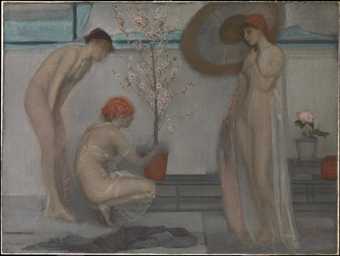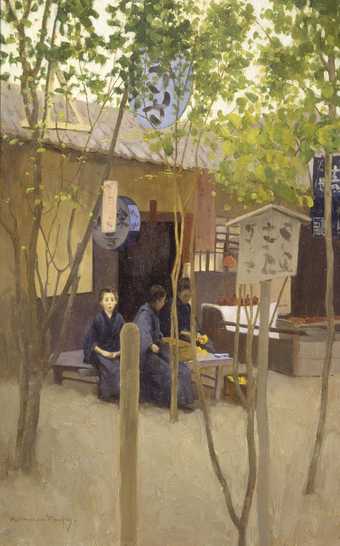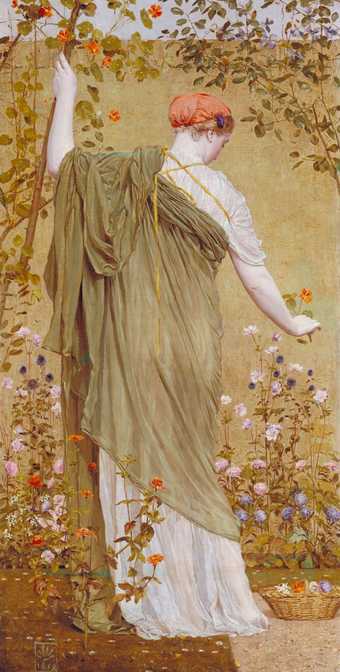
James Abbott McNeill Whistler
Three Figures: Pink and Grey (1868–78)
Tate
The term is generally said to have been coined by the French critic Philippe Burty in the early 1870s. It described the craze for Japanese art and design that swept France and elsewhere after trade with Japan resumed in the 1850s, the country having been closed to the West since about 1600.
The rediscovery of Japanese art and design had an almost incalculable effect on Western art. The development of modern painting from impressionism on was profoundly affected by the flatness, brilliant colour, and high degree of stylisation, combined with realist subject matter, of Japanese woodcut prints. Design was similarly affected in as seen in the aesthetic movement and art nouveau.
In Britain the chief artist transmitter was James Abbott McNeill Whistler. In the field of design, Christopher Dresser and the architect William Godwin were key figures.




